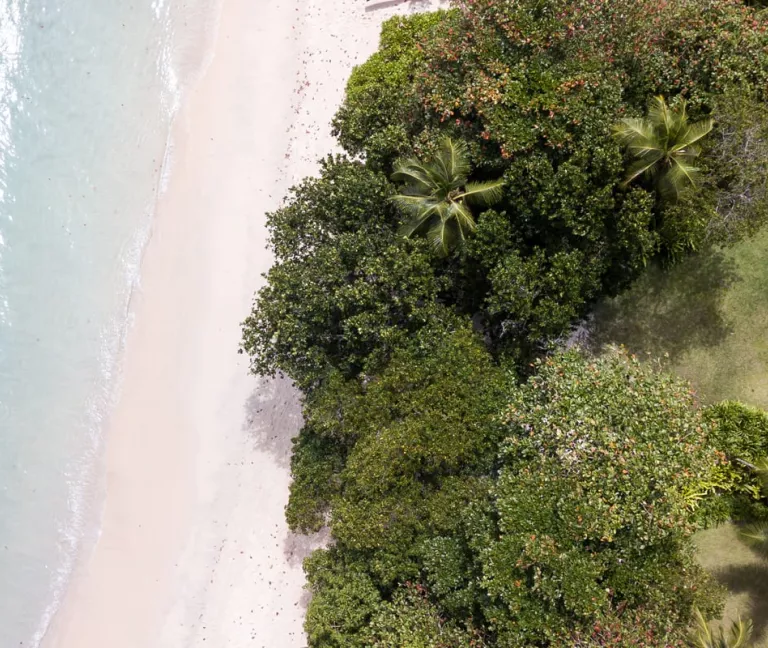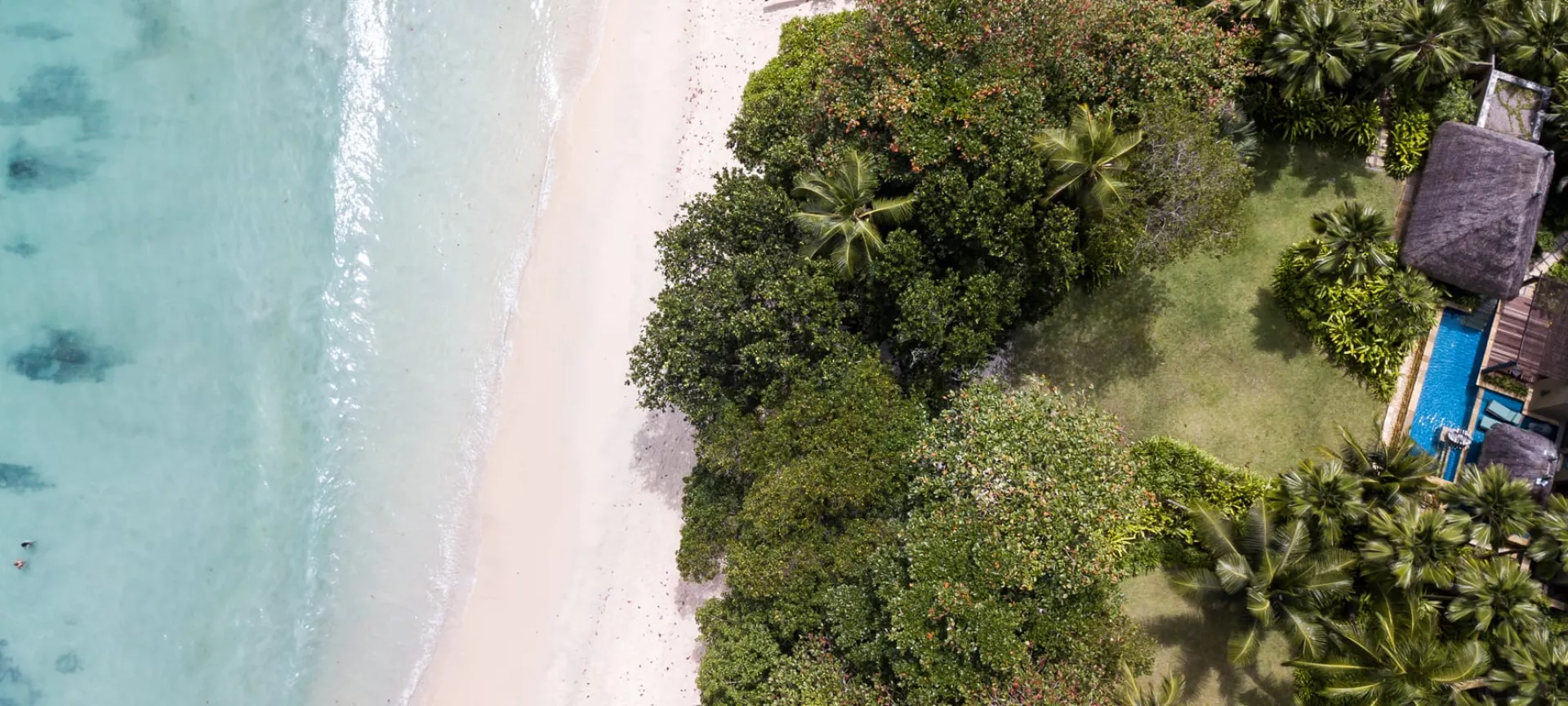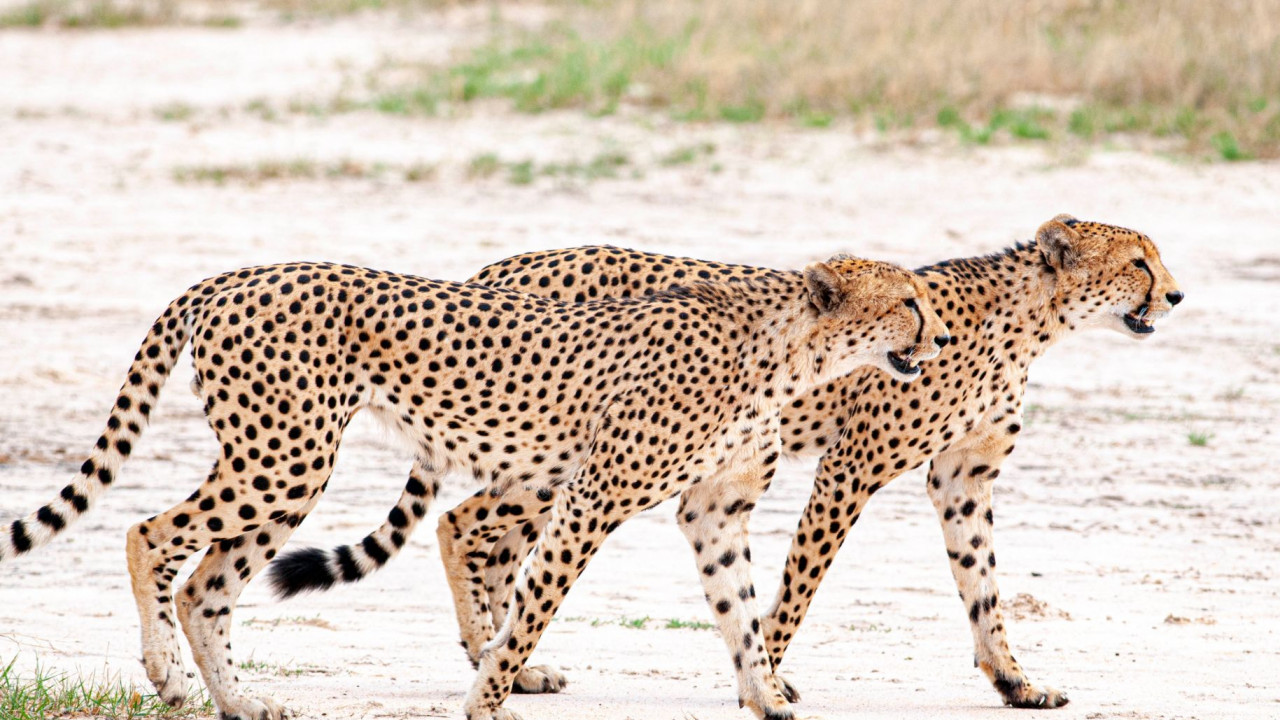
A guide’s job is to help you understand what you are seeing in the wild, effectively telling you the story of the bush.
When training to be a guide, a great technique to help you with leading a sighting is to look at a random photo that you've never seen before, and then interpret what you see, weaving it all into a story.
Here’s our attempt. If you fancy having a go we’d love to hear any of your thoughts.
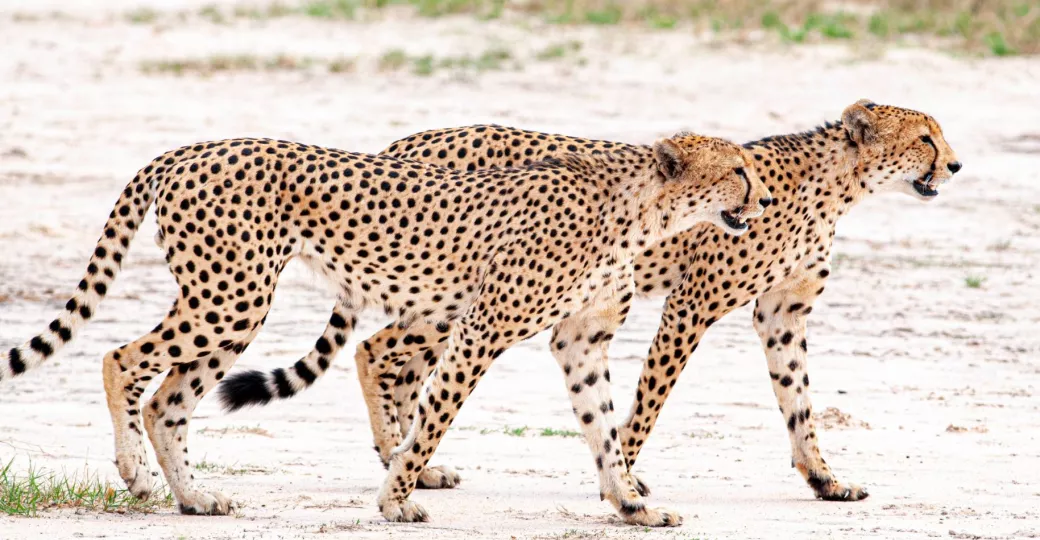
Two male cheetahs in Zimbabwe's Hwange National Park - Toby Pheasant
First things first – time for a quick test. Are the two cats in the photo above leopard or cheetah?
If you have been following some of our social media channels, you’ll quickly be able to identify these as cheetah.
What key features distinguish these as cheetah?
Before zooming into the finer details of these animals, take a brief moment to get an impression of their general size and shape. Comparing these two cheetah to the image of the leopard below, you’ll see that the cheetah have a very slender build with long thin legs and that their heads are quite small and round too.
If you then look a little closer, you’ll notice that these cheetah have solid spots as opposed to the rosettes of the leopard. Additionally, you can easily see the black stripe down the bridge of the cheetah's nose.
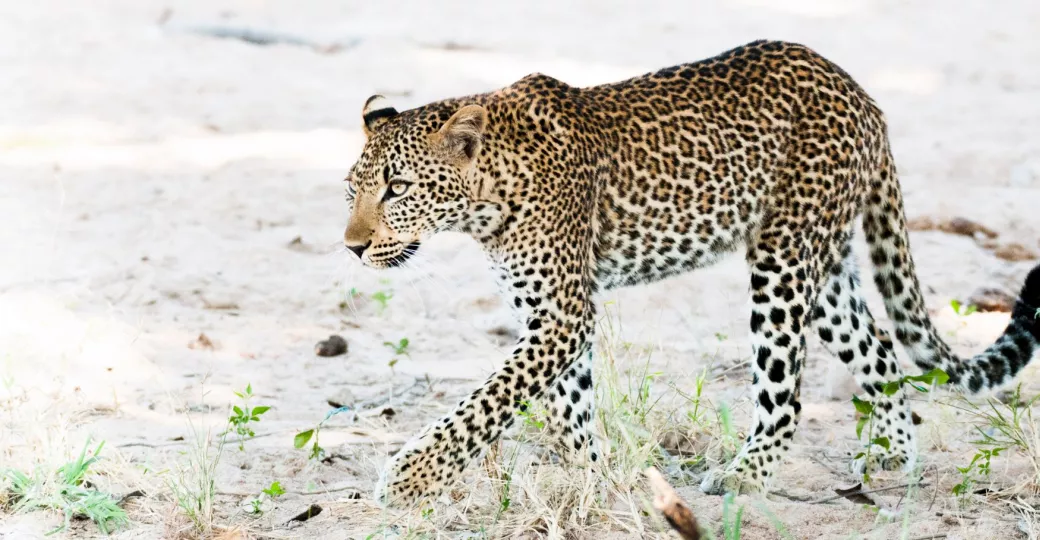
Leopard are noticeably stockier than cheetah, photographed in Zambia's South Luangwa - Toby Pheasant
These are the key giveaways that separate a cheetah from a leopard. Now, is there anything else we can see from the main photo that helps us distinguish cheetah from the other big cats?
If you focus on their feet you will notice their claws are clearly visible. Cheetah, unlike other big cats, have non-retractable claws. While it's quite tough to make out on this photo, you can also see that the tails of the cheetah are quite flat compared to a rounder tail of a lion or leopard.
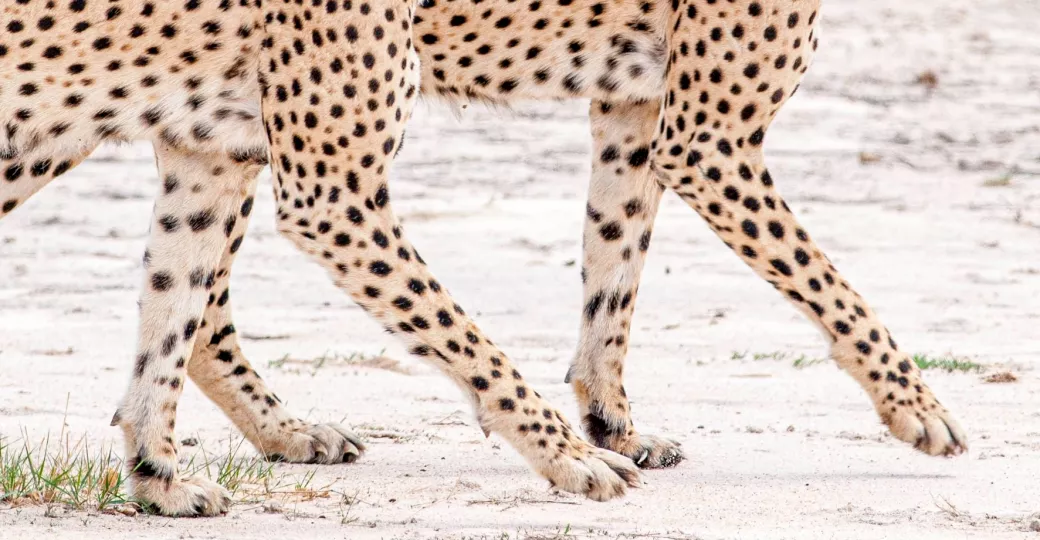
Close up of the non-retractable claws of a cheetah - Toby Pheasant
If you look very closely now, there are two more things that you can notice from the main image:
Firstly, the animal in the foreground is a male (you can work out how we identified that yourself!), and, due to the size of the two animals being almost identical, it’s fair to assume the animal behind is a male too.
Secondly, they are walking together in what, judging by the reflection of the light off the ground, looks like the middle of the day.
Why is all of this important?
Looking closely at an animal and being able to identify these features helps us understand more about the animal itself.
We all know that cheetah are incredibly fast animals which hunt their prey by chasing them down in explosive high speed pursuits. Their slender build and small heads are designed to help with aerodynamics. Their non-retractable claws act like running spikes to give them more grip when making sharp turns. Their long flat tails act as a rudder to balance at high speed.
Leopards and lions typically hunt their prey by stalking to within a few meters and, instead of tripping them up like a cheetah, will haul their prey down using their own sharp claws and powerful upper body strength.
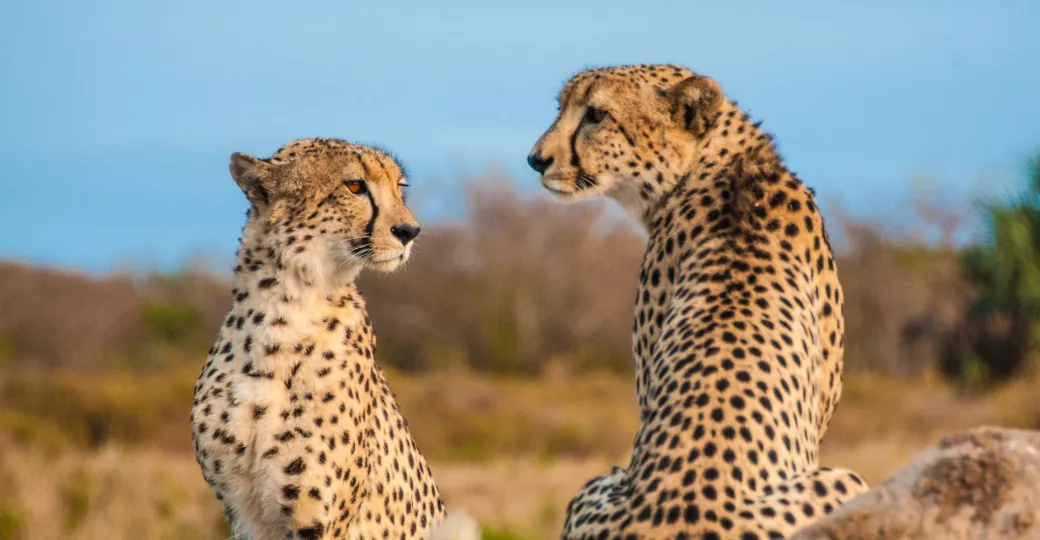
A clear look at the strip down the bridge of a cheetah's nose from a different coalition of cheetahs, photographed in South Africa - Toby Pheasant
The black lines that you can see down a cheetah's face help to reduce glare from the sun. Cheetah typically hunt during the day in a bid to avoid having their kills stolen by lions, hyena and leopards.
Given they need to hunt during the day, it’s important for them to be able to clearly focus their gaze in the bright sunshine. If you look at other more nocturnal big cats, you’ll notice they often have a white patch under their eyes, which helps reflect light.
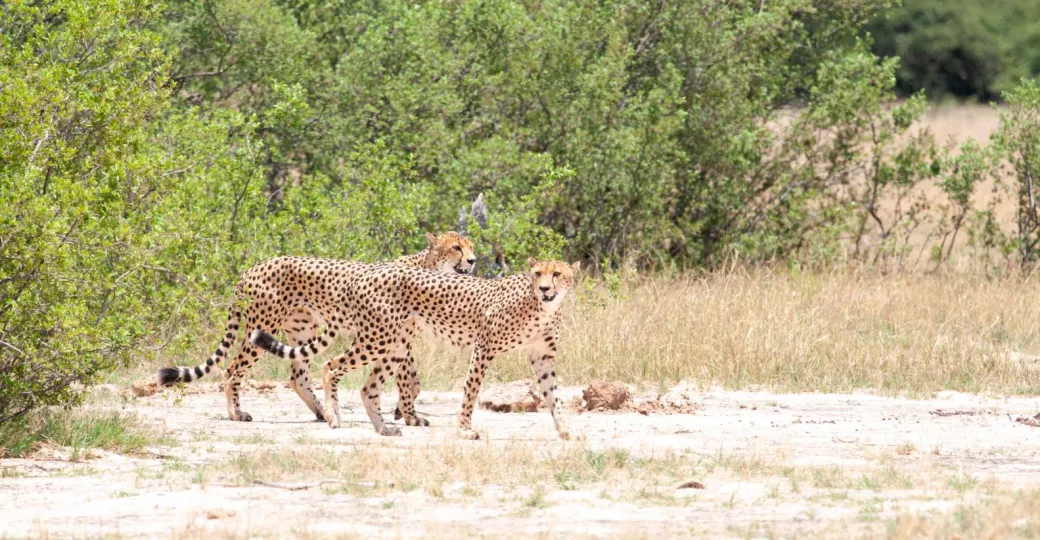
Two male cheetah walking through thickets into open areas hoping to flush out prey, photographed in Zimbabwe's Hwange National Park - Toby Pheasant
But what about these two cheetah?
As we briefly mentioned earlier, these are two males. Male cheetah, like lions, but contrary to leopards, form coalitions. Cheetah coalitions are almost always made up of brothers from the same litter. In areas like the Masai Mara, it’s not uncommon to see coalitions of around 5 males (females often have litters of up to about 8 cubs allowing for large coalitions).
Teaming up to form a coalition allows the males to control larger territories, which would increase their chances of finding females to mate with and ‘spread their genes’ - the ultimate goal for any wild animal.
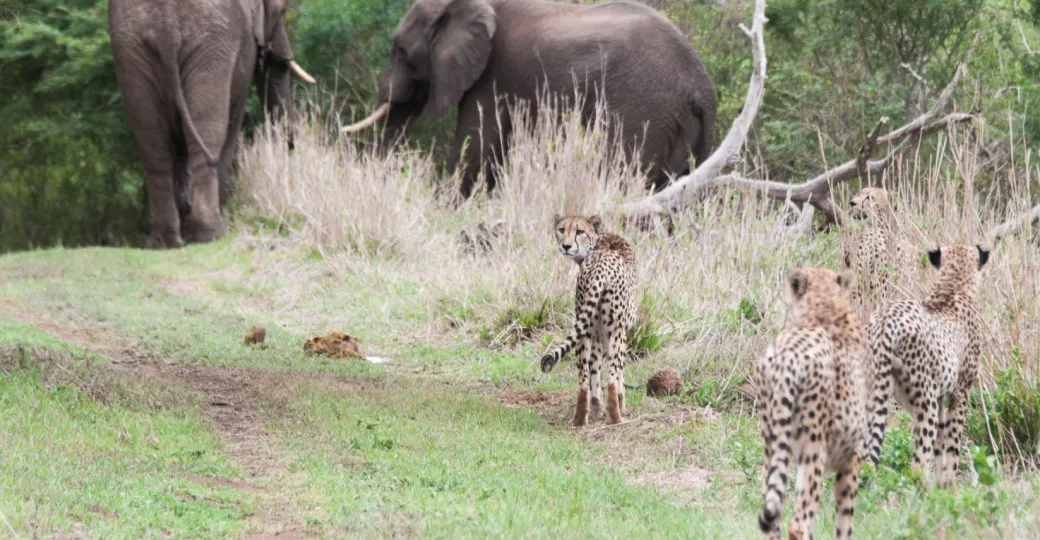
Three newly independent young male cheetah with eyes bigger than their stomachs, photographed in South Africa - Toby Pheasant
These brothers would have grown up together, potentially with a couple of sisters and maybe even a few other brothers. A mother cheetah stays with her cubs for about 18 months, training them up to hunt for themselves, before she effectively abandons them (something which is very hard to watch).
If these two cheetahs had any sisters, they would have stayed with them for another couple of months before finally going their separate ways (the females would also have split up from each other to begin solitary lives).
These two males could have had a brother or two growing up, however, cheetah cub mortality rate is devastatingly high. Cubs are often killed by other male cheetah, lions, leopards, hyena, wild dog, or a number of other animals.

Two male cheetah using the elevation of a termite mound to scan the open areas, photographed in front of Linkwasha Camp in Zimbabwe's Hwange National Park - Toby Pheasant
These two brothers here look pretty hungry, and judging by their behaviour we would say there are more than likely on the hunt, in search of something like an impala.
While they were walking, they moved between open areas and thickets, hoping to flush an antelope out into the open so that they could make use of their speed and agility.
Toby saw these two cheetahs on his last morning in Zimbabwe’s Hwange National Park - we don’t know if they were successful or not.

Toby Pheasant
Toby first visited Africa at the tender age of four when he accompanied his family on their first of several safari holidays. From that moment on Toby’s love affair with Africa’s nature and wildlif...
View profileNever miss a notebook entry with our newsletter

